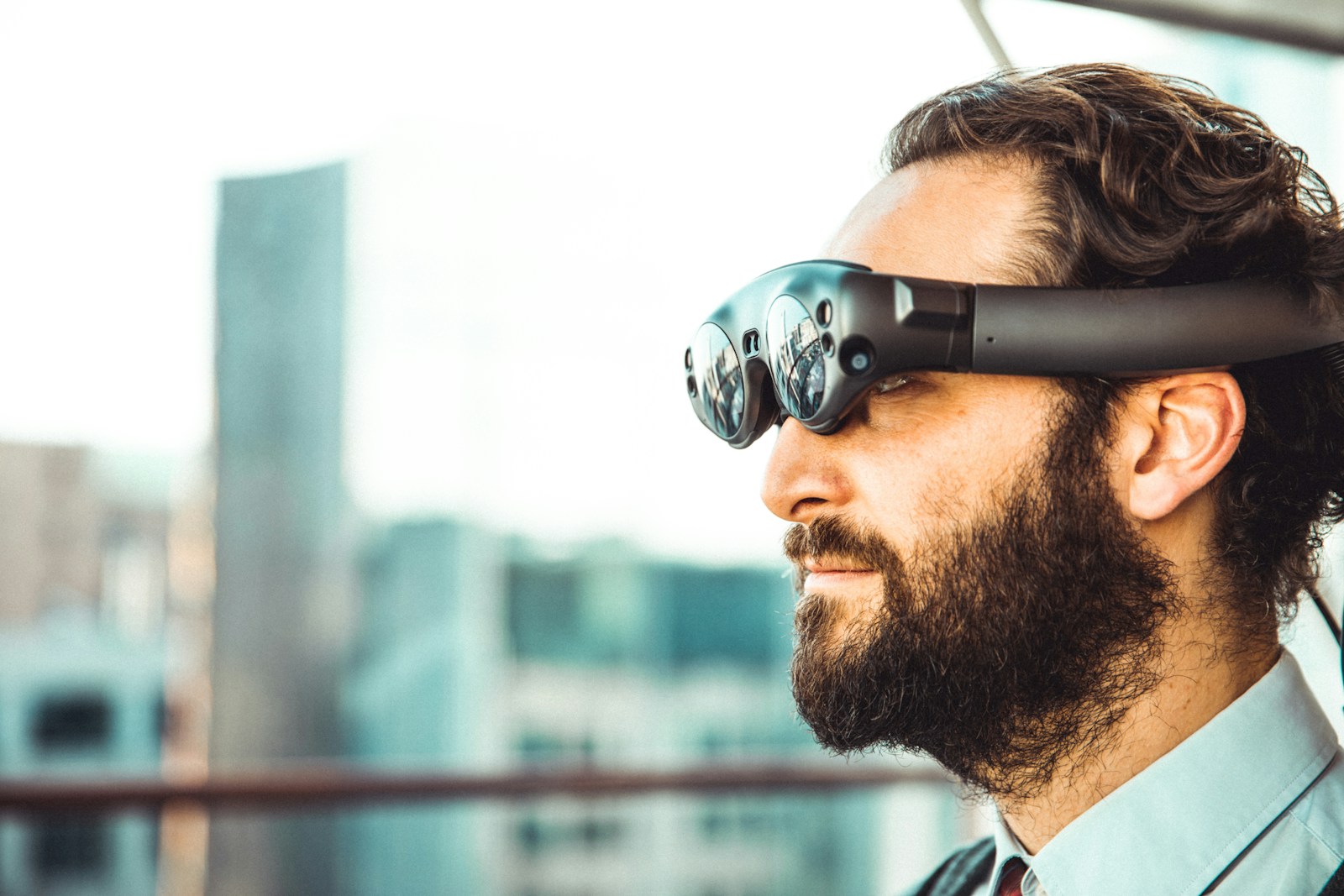In today’s fast-paced digital era, the blend of our physical and digital lives is becoming increasingly seamless, thanks to groundbreaking advancements in technology. Among these innovations, Augmented Reality (AR) stands out as a transformative force that is reshaping not just how we interact with the world around us, but also our future in profound ways. AR, by overlaying digital information onto the physical environment, has moved beyond the confines of the screen to influence various aspects of our lives, from education and healthcare to entertainment and retail. This comprehensive exploration delves into the evolution of AR, its current applications, and the visionary future it promises, highlighting how it is poised to revolutionize our interaction with the digital and physical realms.

The Evolution of Augmented Reality
Augmented Reality’s journey from a concept to a world-changing technology is a tale of innovation and imagination. Its origins can be traced back to the early 20th century, but it wasn’t until the late 1960s that Ivan Sutherland, a computer scientist, created the first head-mounted display system, laying the groundwork for AR. However, AR remained largely in the domain of researchers and developers until the 21st century, when advancements in computing power, smartphone technology, and high-speed internet set the stage for its mass adoption.
Transforming Industries: AR’s Broad Applications
Education and Training
AR is revolutionizing education and training by making learning more interactive, engaging, and accessible. By overlaying digital information onto real-world objects, AR can turn a traditional classroom into a dynamic learning environment. For instance, medical students can use AR to practice surgeries in a controlled, virtual space, enhancing their skills without the risks associated with real-life operations.
Healthcare
In healthcare, AR is being utilized for both diagnostic and therapeutic purposes. Surgeons are using AR glasses to access real-time data and patient information during procedures, improving precision and outcomes. Moreover, AR is supporting patients through rehabilitation by making exercises more engaging and by providing real-time feedback.
Retail and E-Commerce
The retail sector has embraced AR to offer customers a try-before-you-buy experience. Through AR apps, consumers can visualize how furniture looks in their home or how a pair of glasses fits their face before making a purchase, bridging the gap between online and in-store shopping experiences.
Entertainment and Gaming
The entertainment industry has been at the forefront of adopting AR, creating immersive experiences that blend the real and the virtual. Pokémon GO, a mobile game that layers virtual creatures onto the real world, became a global phenomenon, demonstrating AR’s potential to create engaging and interactive experiences.
Manufacturing and Design
AR is transforming manufacturing and design by streamlining processes, from prototyping to assembly. Designers can use AR to visualize and modify products in real-time, reducing the need for physical prototypes. Similarly, in manufacturing, AR can guide workers through complex assembly processes, improving efficiency and reducing errors.
The Future Shaped by Augmented Reality
The future envisioned through the lens of AR is one of enhanced possibilities and transformed daily experiences. As AR technology continues to evolve, its integration into our lives is expected to deepen, offering more personalized and intuitive interactions with the digital world.
Smart Cities and Urban Planning
AR has the potential to play a pivotal role in the development of smart cities, offering new ways to interact with urban environments. Imagine pointing your smartphone at a building to get historical information, real-time data on public transport schedules, or even to report issues to city officials directly.
Enhanced Personalized Learning
In education, AR could offer personalized learning experiences tailored to each student’s needs and learning pace. This individualized approach could help bridge learning gaps and make education more accessible to diverse learners.
Breakthroughs in Healthcare
The future of healthcare could see AR facilitating remote surgeries, allowing specialists to guide procedures from across the globe. Additionally, AR could enhance patient education, enabling individuals to better understand their health conditions and treatments through visualizations.
A New Wave of Interactive Entertainment
Entertainment and gaming are poised for a new wave of innovation with AR. Future AR games and experiences could seamlessly integrate with the real world, offering even more immersive and interactive gameplay that blurs the boundaries between virtual and physical.
The Future of Work
The workplace is not immune to AR’s transformative potential. AR could enable remote assistance, where experts guide on-site workers through complex tasks in real time, or even create virtual meeting spaces that simulate the experience of being in the same room with remote colleagues.
Embracing the Challenges
While the promise of AR is vast, its widespread adoption is not without challenges. Issues such as privacy concerns, digital divide, and the need for robust infrastructure need to be addressed. Furthermore, developing user-friendly AR interfaces that cater to a diverse user base remains a challenge.
Conclusion
Augmented Reality is not just a technological innovation; it’s a catalyst for change, with the power to transform our interactions with the world and with each other. As we stand on the brink of this new reality, it is imperative that we navigate its development thoughtfully, ensuring that AR serves to enhance our lives, democratize information, and foster a more inclusive, engaging, and informed society. Beyond the screen, AR beckons us towards a future where our digital and physical realities are intertwined, opening up endless possibilities for innovation, connection, and exploration.
Alex is a passionate tech and finance writer, bringing a blend of energy and expertise to the world of blogging. With a deep interest in cutting-edge technology and financial trends, Alex delves into the latest innovations, offering insights and analysis that resonate with both tech enthusiasts and finance-savvy readers. His curiosity extends to exploring how these two worlds intersect, from emerging fintech solutions to the broader impact of technological advancements on the economy. When he's not writing, you'll find Alex at the gym, fueling his love for fitness, or immersed in the latest video game. Through his posts, Alex aims to share his enthusiasm and knowledge, helping readers navigate the fast-paced worlds of tech and finance.
